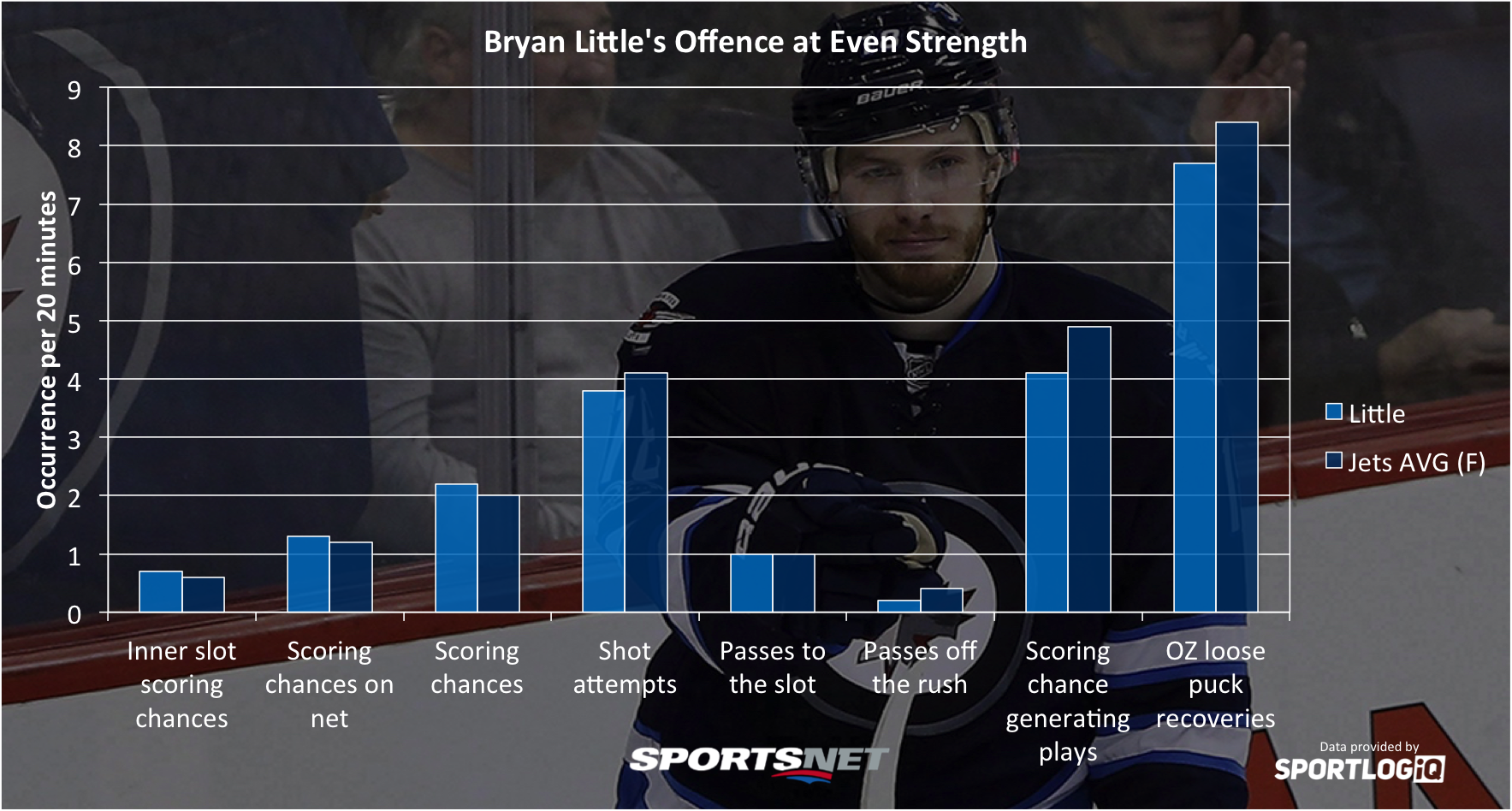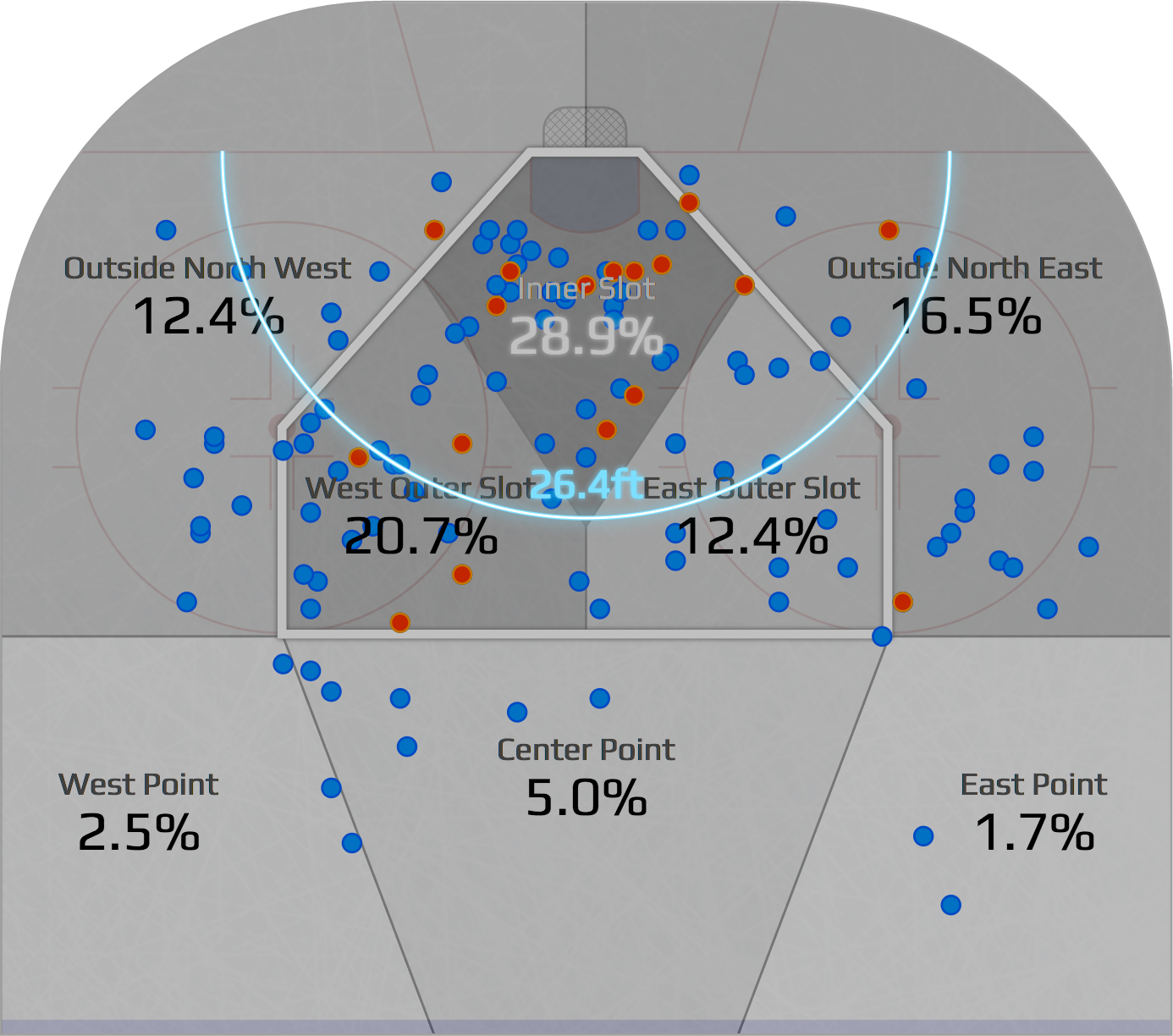• Jets forward group deeper than the stars
• Little producing 2.3 points per 60 at 5-v-5
• Subtle shift in shot location making impact
With consistent goaltending struggles submarining them, the Winnipeg Jets have looked like less than the sum of their parts this season, on the outside of the playoff picture looking in without games in hand.
One area of positivity, though, has been their forward group. The top line of Patrick Laine, Nikolaj Ehlers and Mark Scheifele have been getting most of the press, but the consistently excellent Blake Wheeler is still a big factor, as is Bryan Little.
Little has been a consistently strong player almost since he broke into the league without much fanfare. After missing significant time early this season, Little has been racking up points at an obscene rate with 16 goals and 30 points in 36 games, and 2.3 points per 60 minutes at five-vs-five, just a hair behind Scheifele’s team lead of 2.31.
[relatedlinks]
While Little has been a strong even-strength producer for the past five seasons straight, he’s never played at this level. So is this a change in his play, or just a nice hot streak? Let’s look into it.

One thing to point out when looking at Little compared to Jets average is that the Jets are a pretty good team offensively, with several potent players. Even players who haven’t produced this season like Mathieu Perrault have solid underlying numbers.
With that said, Little’s offensive play doesn’t jump off the page in terms of the plays he’s actually making. He doesn’t attack much off the rush, doesn’t shoot as much as most Jets forwards, and creates fewer scoring chances overall than his teammates do. Yet, he’s killing it this year, so what are we missing?
Little being an average second-line centre would explain his production throughout his career, but this season his on-ice team shooting percentage has risen from 8.4 per cent over the last four seasons to 9.33 per cent, and his personal shooting percentage has risen from 11.42 to 17.86 per cent, a career high.
The question is whether or not this spike in effectiveness is earned by getting into better shooting position, or simply short-term variation in percentages that happen often around the NHL. We can approximate by comparing Little’s shot locations this season to last season, starting with last season.

Blue dots are saved shots, red dots are goals, and the bright blue line is the median shot distance for Little during the 2015–16 NHL season. Little’s shot rate is essentially the same this season, rising to 7.15 per 60 minutes from 7.05, so volume isn’t a factor.
Last season Little scored on 13.4 per cent of his shots on goal, which is impressive no matter what, but his shots weren’t of a particularly high quality, from a median distance of just 26.4 feet from the goal line. That aligns with his career average as well, so we know that Little is an above-average finisher in the NHL. But what do his shot locations look like this year?

As it turns out, while his scoring-chance volume doesn’t look too great, Little has shaved 8.5 feet off of his median-shot distance, mostly moving shots he used to take from the high slot into the inner slot, where expected shooting percentage rises by about 10 percentage points.
Even with this increased drive to the net, Little’s production is probably a little higher than it should be. But considering his finishing ability, his goal totals look to be earned so far. This is a case of a good player having a great season more than a lucky one.